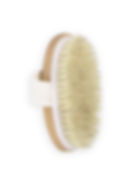Cyclical Changes
The main cause of breast changes in a woman's life are due to the ebb and flow of hormones throughout her monthly
cycle. While lifestyle and other events can effect the size, shape and feel of breasts it is hormones that have a consistent effect throughout our lives. Hormones, after all, are responsible for their development in the first place. But even long past puberty most women notice changes throughout their monthly cycle and it's very normal.
So what breast changes are typical and what causes them?

Let's Explore the Monthly Cycle and it's Phases
The graph above gives you a visual indication of how the female sex hormones are fluctuating throughout these monthly phases and how they are effecting the reproductive system. Follow along from day one of menstruation while reading about how each phase effects the breast tissue below.
Phase One ~ They're lumpy
The first few days of your cycle (when your period starts), the texture of your boobs may suddenly feel uneven and nodular. During menstruation, this lumpiness is due to milk glands enlarging in preparation for a possible pregnancy. The bumpy feel is not permanent. As soon as your body realises that you're not pregnant, your breasts will smooth out.
Phase Two ~ They're smaller and softer
Toward the end of menstruation (depending on the length of your cycle, it's typically around day 3 or 7), your boobs are suddenly pulling a disappearing act. Breasts are at their lowest volume at this time because estrogen and progesterone are at their lowest. This is actually the most accurate depiction of your true size because you're not being pumped up with hormones. They also tend to soften up towards the end of bleeding.
Phase Three ~ They're perky
As you get closer to ovulation (this is known as the follicular phase and it happens around day 12), estrogen starts to rise. And according to the Journal of Ultrasound Medicine this causes your breasts to look extra buoyant. That's because estrogen improves skin elasticity. Consider it a natural lift.
Phase Four ~ They're full and firm
In what's considered the luteal phase (this occurs after ovulation, which is generally around day 15 and up through to the end of your cycle), expect to be at your largest cup size. Progesterone is really peaking, so this is a time associated with the largest breast size and density. They may even look swollen or slightly veiny, and they can feel tender.
Phase Five ~ They're lopsided
Research published in the journal Ethology and Sociobiology found that when estrogen is low during your premenstrual week, breasts can become less symmetrical. That could be why your left boob looks crooked all of a sudden. But don't sweat it! Once your period arrives, your boobs will even out.

When it's not Hormones
Aside from the surge and crash of hormones that are happening monthly, there are other things that can effect your breasts.
Sex can make them bigger
As your heart rate and blood pressure increase, so does the size of your breasts!
Carbs can enlarge them
Eating carbohydrate-rich foods stimulates the production of insulin, which can lead to fluid retention in your boobs.
Caffeine can make them knotty
Your morning cup of coffee may cause fibrocycstic breasts. This is due to sensitivity in breast tissue. It's benign, but the rope-like feel can be painful.













